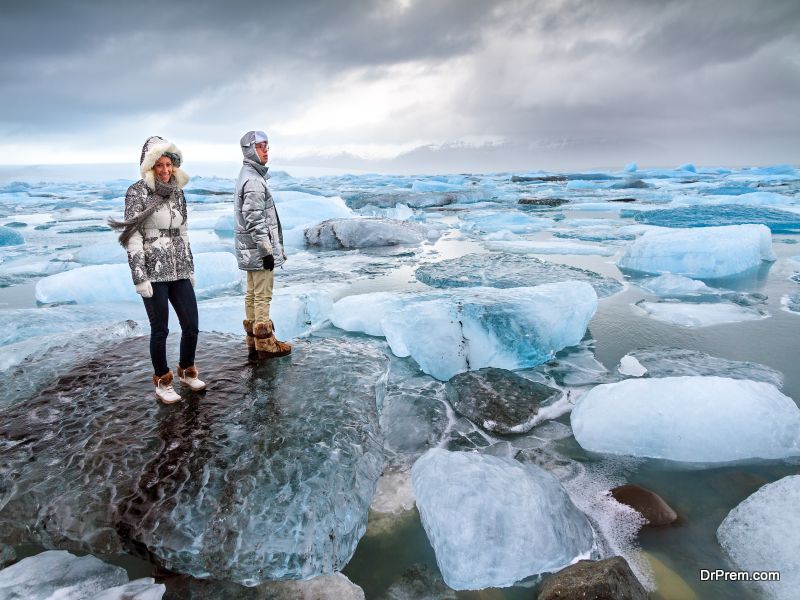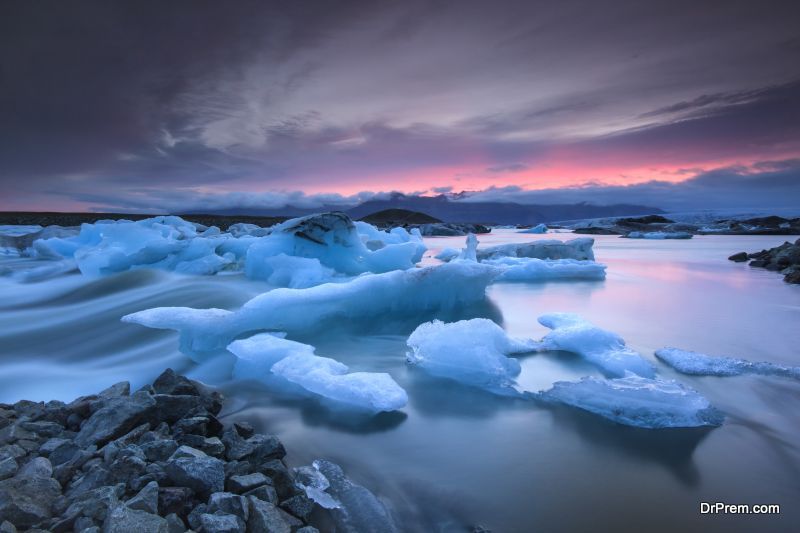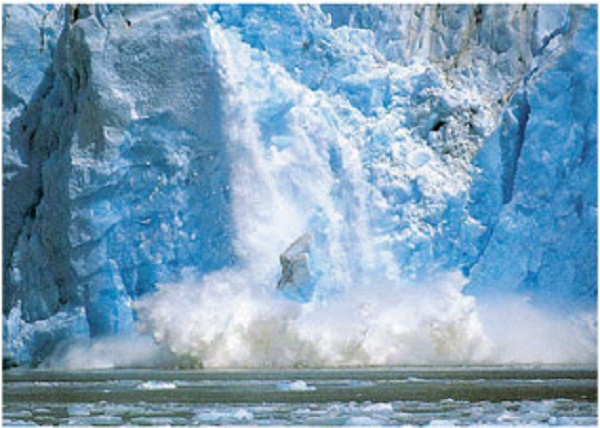The ice in the Arctic Ocean melts in the late summer every year but the minimum has been steadily shrinking by approximately 13% every decade. According to scientists, this does not spell well for the planet. Man-made climate change has played a major part in this phenomenon. The ice in the Arctic works like an air conditioner, cycling cool water and air to the south and keeps the jet streams moving. Scientists are predicting changes resulting from an ice free arctic which would have a global impact. Read on to find out how you too could be affected by the loss of ice in the Arctic:
The poles will no longer reflect sunlight
The Earth’s poles get very little direct sunlight than at the lower latitudes, and so they are extremely cold. Sea ice being white, also reflects most of the sunlight back into space, known as the “albedo” effect, and this also keeps the Earth’s cold by reducing heat absorption. Shrinking ice would expose more seawater to the sun and the ocean would absorb more heat, in turn melting more ice and reducing the “albedo” effect, thus causing temperatures to rise in the poles.
Methane seeping out into the atmosphere
Scientists have discovered a new source of methane over the Arctic ocean, which was absent over chunks of solid ice but was discovered over the surface of broken ice, north of the Beaufort and Chuckchi seas. They suspect seabed sediments and microbes to be the new source of methane. As sea ice continues to melt, the amount of methane in the atmosphere would also increase, leading to more global warming and climate change, as a single molecule of methane traps 23 times more heat than one molecule of carbon dioxide.
Severe weather would be more common
Severe weather conditions are boosted by global warming and the loss of sea ice would also favor bigger storms in the Arctic Ocean. Sea ice limits the moisture movement from ocean to atmosphere, which reduces the possibility of strong storms occurring. But with sea ice loss, bigger storms would form easily, with bigger waves.
Coastal erosion would threaten communities
Alaska’s Shishmarief’s Inuit people voted to relocate their ancestral homes away from the coast to higher regions, as the receding shoreline invaded the town’s drinking water reserves. This could become a reality for many other villages and towns on the Arctic shoreline. The Arctic waves and storms could damage current ice and stop the growth of new ice and thus create an unending loop which would cause further loss of sea ice. Loss of ice also means that hunters would not be able to hunt for food like seals as there would be no terrain they could walk over, thus robbing communities of food.
New predators on the horizon
Another strange sight which people are seeing in the High Arctic regions are killer whales. These whales are coming closer to shores to feed on seals as there is no sea ice cover to stop them venturing closer to the shore. Polar bears are struggling to survive as well as other marine mammals. The warm water of the ocean may give rise to a spurt in planktons which might feed all kinds of sea creatures, and scientists are predicting a major disruption in Oceanic life due to it.
Weird weather could occur everywhere on Earth
An Arctic ocean which is ice free would affect everyone on Earth. The Arctic is warming at a pace which is twice as fast as the rest of the planet, causing jet streams to weaken. This means that weather would persist longer – droughts will get worse and flooding would be worse too and the patterns of ocean currents would be unpredictable and weird.
We cannot suddenly stop all our activities which lead to global warming causing sea ice loss, and our continuing on planet-destructive mode in the same unthinking manner might lead to severe outcomes which would be out of our control. The only way is for people and scientists working together to remove carbon dioxide from the atmosphere, while it is still possible to do so.






